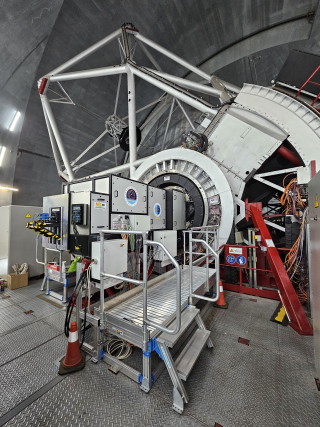Adaptive Optics for the GTC


Visit de web pages of the project for detailed information:
Since the beginning of the design of the GTC, it was clear that in order to exploit the full diffraction-limited potential of the telescope, an Adaptive Optics (AO) system would be necessary, and provisions were made to ensure that the telescope would not limit the future AO performance. Well before the telescope entered its scientific operation, in 2009, the AO system was already in development.
The AO conceptual design was carried out during 2001, and in 2004 took place the preliminary design review. In January 2008 the project passed the Advance Design Review and started the detailed design and manufacturing. The integration of subsystems began in 2012.
The GTCAO system was initially developed by the GTC project office but due to a lack of resources in the development team, the project paused in 2013. An agreement between IAC, GTC and the Canary Government was made in order to continue the development and incorporate, as a second phase, a Laser Guide Star facility. The project restarted effectively in 2015.
Since then, the GTCAO team at the IAC has completed the detailed design, procurement and manufacturing of the remaining components, and have completed the integration and tests of the system. The whole system passed the Factory Acceptance phase in April 2023, was transported to the GTC in June 2023, and got its first technical light on July 24th 2023.
Expected to be fully operative at the beginning of 2025.
